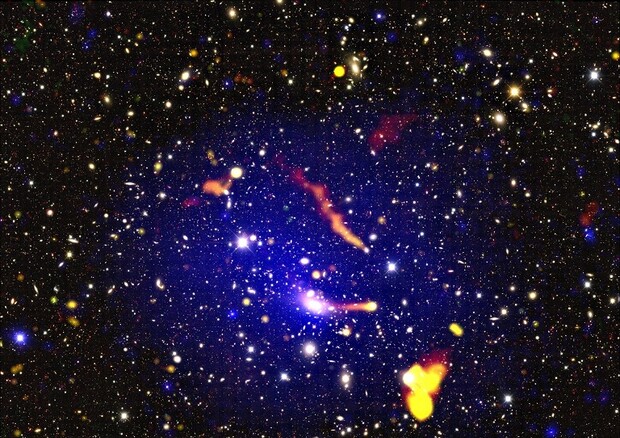
The astonishing and mysterious discoveries of radio emission sources from the Abell 3266 group of galaxies: it is a series of rarely observed phenomena in the same body (unusually directed radio debris, a fossil radio emission from a now-extinct galaxy and a radio halo of uncertain nature) that challenges current theories About the characteristics and origins of these sources. the study published In the Monthly Notices of the Royal Astronomical Society by the international group led by the University of Bologna and the National Institute of Astrophysics (INAF).
“The data we processed have allowed us to uncover a real treasure in terms of mysterious and unusual elements within this group of galaxies: there are a number of radio sources, not only related to individual galaxies, but also many amazing active radio galaxies.” , notes Christopher Riselli, a researcher at the University of Bologna, co-author of the INAF and first author of the study. “In particular, we have identified shock-fed radio debris, possibly a radio aura associated with the turbulence and radio emission phenomenon associated with the final stages of a radio galaxy’s life.”
Abell 3266 is a particularly dynamic group of galaxies, as it undergoes a complex collision event. These events – which lead to the formation of a mass of less massive rock – release huge amounts of energy that is dissipated through shocks and turbulent movements. These are giant storm-like phenomena, the largest in the universe.
To try to unravel some of the many still unknown details of Abell 3266 and the physical phenomena generated within it (which, given its size and complexity, are still not well understood), the researchers used data from the Askap radio telescope and from Australia. The Telescope Compact Array (Atca) – both from Australia’s national science agency, Csiro – combined with the Murchison Widefield Array in Western Australia and the MeerKAT radio telescope in South Africa.
Reproduction is reserved © Copyright ANSA


